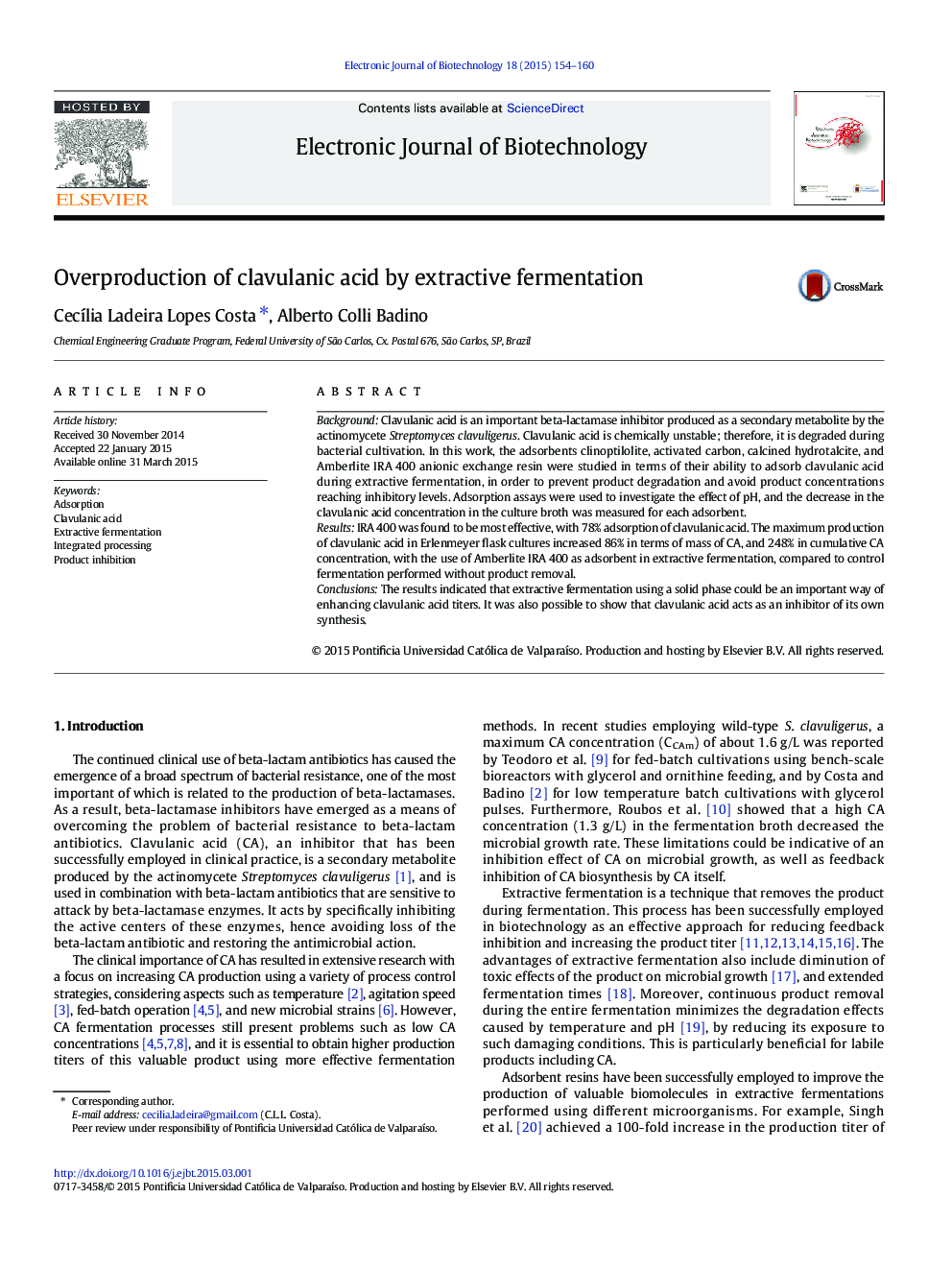| Article ID | Journal | Published Year | Pages | File Type |
|---|---|---|---|---|
| 200729 | Electronic Journal of Biotechnology | 2015 | 7 Pages |
BackgroundClavulanic acid is an important beta-lactamase inhibitor produced as a secondary metabolite by the actinomycete Streptomyces clavuligerus. Clavulanic acid is chemically unstable; therefore, it is degraded during bacterial cultivation. In this work, the adsorbents clinoptilolite, activated carbon, calcined hydrotalcite, and Amberlite IRA 400 anionic exchange resin were studied in terms of their ability to adsorb clavulanic acid during extractive fermentation, in order to prevent product degradation and avoid product concentrations reaching inhibitory levels. Adsorption assays were used to investigate the effect of pH, and the decrease in the clavulanic acid concentration in the culture broth was measured for each adsorbent.ResultsIRA 400 was found to be most effective, with 78% adsorption of clavulanic acid. The maximum production of clavulanic acid in Erlenmeyer flask cultures increased 86% in terms of mass of CA, and 248% in cumulative CA concentration, with the use of Amberlite IRA 400 as adsorbent in extractive fermentation, compared to control fermentation performed without product removal.ConclusionsThe results indicated that extractive fermentation using a solid phase could be an important way of enhancing clavulanic acid titers. It was also possible to show that clavulanic acid acts as an inhibitor of its own synthesis.
